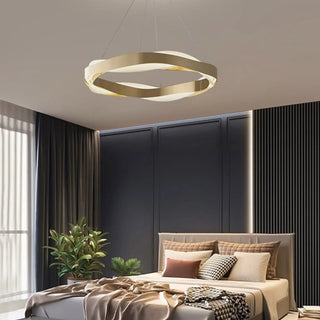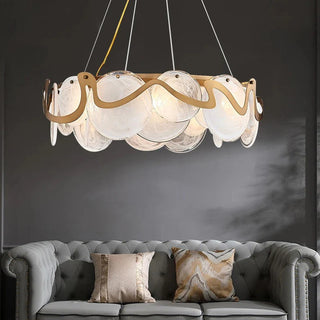Along with any other technical systems and products, lamps need periodic cleaning and washing. That way you can not only extend the service life of the device, but also keep the interior of your apartment safer and more comfortable. Maintenance of lighting equipment is not difficult. We will give some practical tips about caring for different types of chandeliers and talk about differences between individual groups of devices.
What do we not know about dust?
The first thing to learn is that all types of fixtures are equal when it comes to dusting. Regardless of whether it is a ceiling lamp or a wall lamp, dust will settle on it anyway. Now it is common to hear advertising speeches that manufacturers have invented a technology that significantly reduces the percentage of dust that accumulates on their lighting fixtures. We will not say that this is completely impossible - rather, they do not specify what kind of dustiness they are talking about. The fact is that it is really possible to use materials with a more “slippery” surface, but their cost will often be many times higher than the cost of a simple LED lamp. At the same time, the achieved effect can be estimated by reducing the number of dust particles by about 25-35%, which is not so much.
The manufacturer is able to use the highest quality materials available, use the most advanced technologies and provide with various technical nuances, but still there are at least two factors that they cannot influence. The first of them is ridiculously simple: each room has its own amount of dust, and it is quite natural that the number of suspended particles in the air is determined not by the type of lamp, but by the repair made in the apartment. Whitewashed ceilings always produce more dust, which is why hanging chandeliers are traditionally installed on them.
Principles of washing chandeliers
Starting to clean crystal products, stock up on window cleaner and a fair amount of patience. You should start by wiping the core and the "branches" of the fixture. First, wipe them with a dry, lint-free cloth, and then moisten a rag or sponge in a slightly soapy way and gently do the same places again.
If we are talking about cleaning a modern chandelier, the process is usually not very different from the one we spoke about above. The more the style of the lighting fixture tends to be futuristic, the fewer elements it has. And therefore, if you are not attracted by the prospect of washing crystal for hours, get a chandelier in modern or high-tech style. You will spend five to seven minutes cleaning them. Given that they are hung in the same living rooms and bedrooms, there won’t be much dust there. Use soapy water and a soft cloth that won't scratch visible parts.
For those who have a colored glass chandelier hanging in the room, it is important not to overdo it with chemicals, so as not to remove a layer of protective paint layer (if the color is not given by the material itself). Do not use harsh detergents and do not scrub surfaces too hard.
Another not very easy-to-maintain material is textiles. Chandeliers with fabric shades can cause a lot of trouble if you do not know a few tricks that make it easier to interact with them. To remove dust from them most effectively, you need to use a three-step approach. First, you should use a sticky roller on the outer and inner side of the ceiling. Then go over the fixture with a soft brush and, if possible, vacuum it thoroughly. Finally, wipe it with a cloth dampened with water and shampoo, and then wipe thoroughly with a tissue.
Let's move on to the least pleasant option for clearing these lighting fixtures. Kitchen chandeliers always collect a whole layer of various substances on them, and it can be quite difficult to remove such multi-layer dust or even dirt. Because the temperature in the kitchen is often high, fat particles that are invisible to the eye are mixed with the dust settling on the surface of the lamp. If you ignore the cleaning of chandeliers in the kitchen for too long, various pathogens can appear on their surfaces that affect the health of the tenants. Whether your lighting fixture is a simple-design lamp with a single, well-shaped shade or you are using a fan-chandelier, the cleaning approach should be as rigorous as possible.
If possible, remove as many elements as possible from the fixture and soak them in warm soapy water (at least 60°C). After holding all the details in this mix for at least three hours, take a sponge or a rag with a large pile and lather it thickly with soap.
In situations where you cannot or do not know how to detach parts from a chandelier, you can try using the combined method. First, spray a window cleaner on the ceiling, frame parts or fan blades and let the chandelier stay in this state for about ten minutes. Then repeat the procedure, and in the meantime, prepare a few thin rags soaked in a solution of soda with the addition of vinegar and shampoo. Then wrap them tightly around the shades and other accessible elements. After repeated wiping of the plafonds, you will see that the predominant part of the pollution is easily removed.
Final Reminder
Finally, we would like to draw your attention to the fact that when washing chandeliers, safety measures must be observed. In this regard, do not forget to completely turn off electrical products before servicing them. So that the light bulbs do not interfere with you, unscrew them at the very initial stage and put them in a place where they cannot be accidentally touched and damaged. Even if you use LED lamps that do not have a glass bulb, it will be better to protect them from any mechanical damage.









